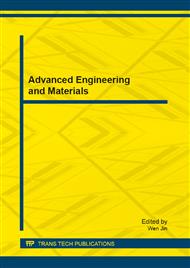p.511
p.520
p.525
p.531
p.535
p.541
p.546
p.550
p.556
A Methodology for Systematic Geometric Error Compensation in Integrated Inspection and Machining
Abstract:
Evaluation of form errors of machined parts is fundamental in quality inspection to verify their conformance to the expected tolerances. Performance of methods have been reviewed in [1].A methodology for maximizing the adherence to the specified tolerances using an integrated machining and inspection system is presented. Considering thedesired tolerance envelope of the part, an error decomposition technique is developed to model machining errors caused by the systematic and non-systematic errors in the machine tool. The model is used to adaptively plan the final machining cuts, based on inspection feedback, to enhance the geometric accuracy of the final product and is illustrated by an example.
Info:
Periodical:
Pages:
535-540
Citation:
Online since:
February 2013
Authors:
Keywords:
Price:
Сopyright:
© 2013 Trans Tech Publications Ltd. All Rights Reserved
Share:
Citation:


